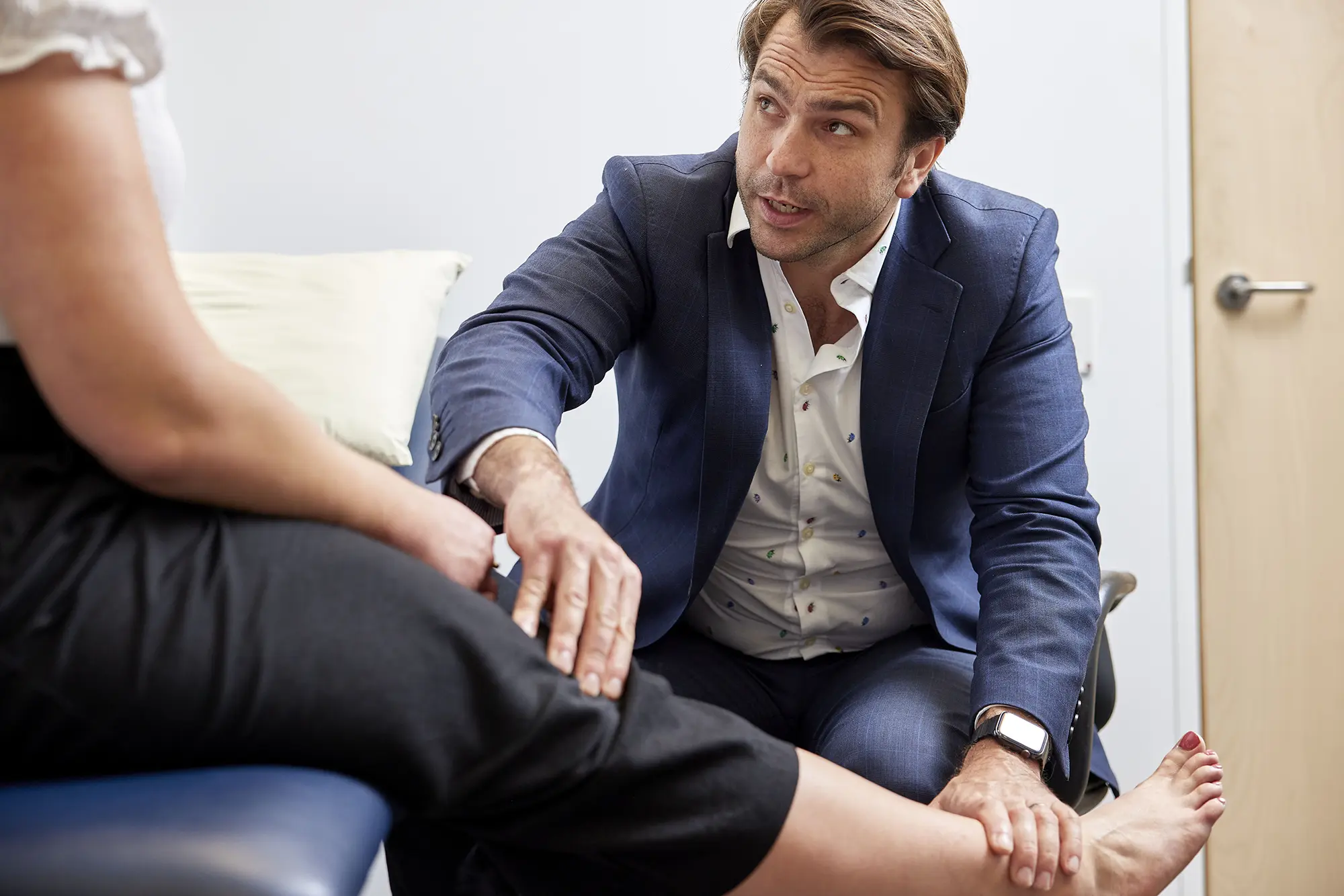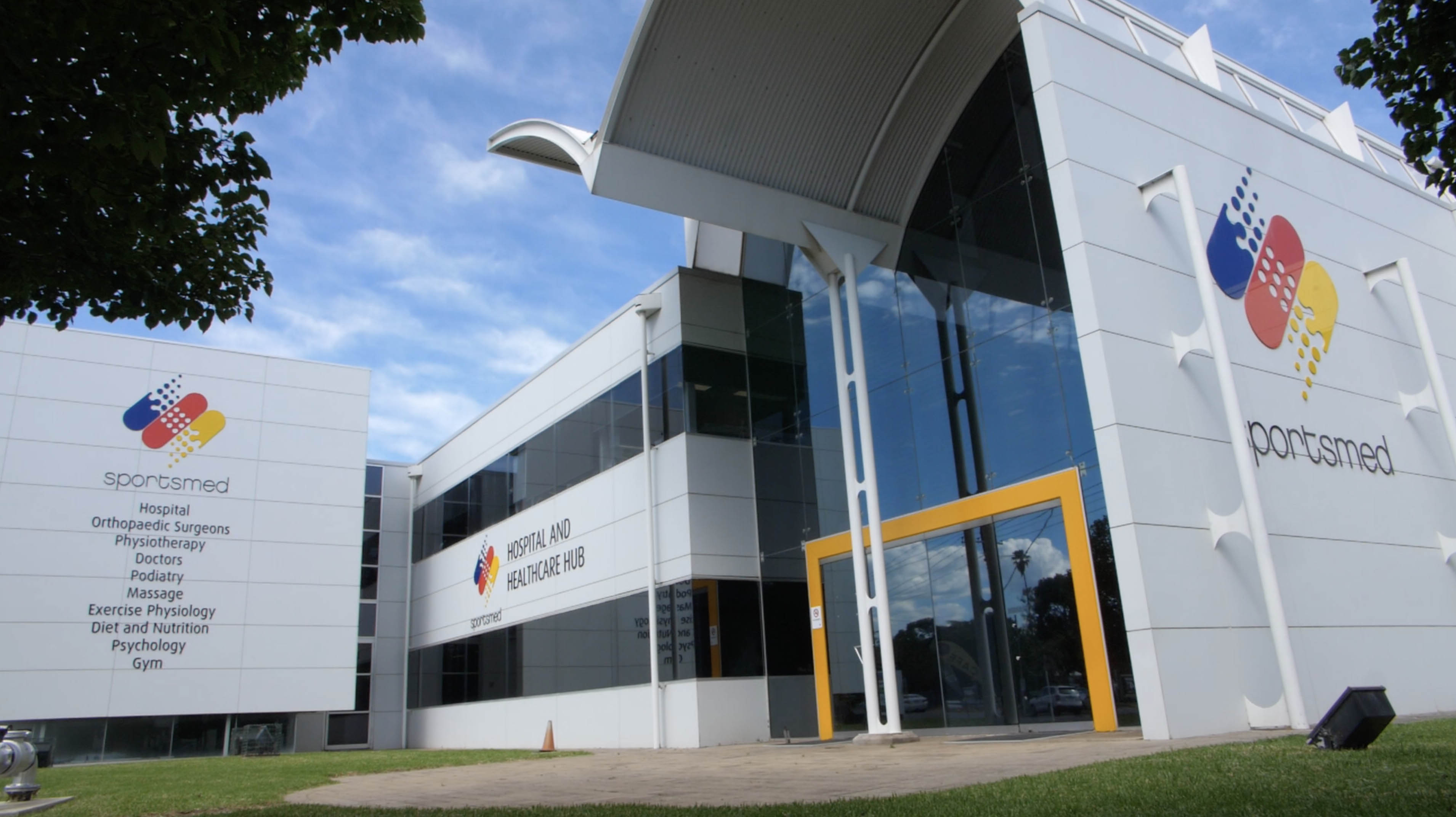
Dr Gieroba ankle focus is on sports related injuries of the ankle; ligament injuries, syndesmotic injuries, ankle fractures and Achilles tendon tears.
Two important ligaments which run from the end of the fibula. One runs to the talus – the bone which sits under the ankle (ATFL), and one runs to the heel bone (CFL).
A ligament injury could be as simple as a minor stretch, or as severe as a complete tear or avulsion (ligament pulled off the bone). They are typically injured by rolling or twisting the ankle.
Lateral ankle injuries are extremely common. Around 98% of lateral ligament injuries in the general population do not need surgery. Podiatry / physiotherapy led rehabilitation are the mainstay of treatment.
If there are other injuries such as tears of other ligaments or cartilage injury then early surgery may be indicated.
People with recurrent episodes of instability may benefit from surgery to stabilise the ankle if they have ongoing issues after 3 months of good rehabilitation.
It starts with an arthroscopy of the ankle to clear scar tissue and look for associated injuries. A small incision is made over the lateral ligaments and they are reattached (and usually tightened) to the bone with a suture anchor. In some cases a high strength suture is also put in to run alongside the ligament like an internal brace.
Initially start with rest, ice and elevation. You should be able to weight bear after a short time. Very painful injuries may benefit from a CAM (moon) boot. For injuries which are very limiting, starting rehabilitation with a podiatrist or physiotherapist is useful. The aims are to control swelling, improve movement, improve strength and then improve functional rehabilitation with proprioceptive (joint position sense) training.
If things do not settle down after 6-10 weeks, or if repeated episodes of instability develop it is worth seeing a surgeon.
These are strong ligaments which connect to two bones of the lower leg (the tibia and fibula) just above the ankle.
Like normal ankle sprains (lateral ligament injury or low ankle sprain), they can occur with sporting injuries such as twisting or rolling the ankle. Another term for a syndesmotic injury is a high ankle sprain. Often they can occur at the same time as an ankle fracture.
These injuries are commonly missed early on, especially if mild. They can be picked up if you have a high suspicion but diagnosis is confirmed with weight bearing X-Ray or other scans (CT / MRI)
These ligaments are key to normal ankle function as they hold the joint together. An unstable syndesmosis can lead to ankle instability, dysfunction or early osteoarthritis.
Tears which are clearly stable are managed with rehab, like a normal ankle sprain. They get better typically more slowly than a normal ankle sprain.
Tears which are clearly unstable are managed with surgery to stabilise the ligaments. This is typically done with a suture button device – two metal buttons connected by a strong suture which holds the bones together to let the ligament heal. Ankle arthroscopy is usually done at the same time to clear scar tissue, look for associated injuries and help visualise the anatomy.
Tears which might be unstable need further investigation – either scans or if very suspicious for instability then keyhole assessment with an arthroscope.
A broken bone in the ankle. Most commonly this is the end of the fibula (small bone on the outside), and/or the tibia. They range in severity from completely undisplaced cracks to severe fractures with multiple separate fracture areas, right up to dislocations of the ankle joint.
Most are diagnosed on plain X-Ray. Sometimes, other scans (CT / MRI) are needed if planning surgery or to look for other injuries.
Most ankle fractures can be classified as stable or unstable. Stable injuries are typically managed with early weight-bearing protected by a CAM boot (moon boot). Unstable injuries need to be fixed surgically. Some ankles are hard to classify as stable or unstable. These may need weight bearing X-Rays, other scans or even simply a period of observation to decide if they are stable or not. A fracture with a dislocation, syndesmotic injury or involving more than 2 bones is usually unstable.
In general, the fracture is reduced to the correct position and fixed with plates and screws or other implants. Sometimes ligaments or the syndesmosis need to be repaired at the same time. Arthroscopy is sometimes used to help assess and clean out the inside of the joint.
This is a strong tendon in the back of the lower leg connecting the calf muscles to the heel bone.
Typically it is associated with a strong contraction of the muscle such as when playing sports. Occasionally the tendon can wear away just through chronic wear and tear (tendinosis). Commonly it feels like being kicked in the back of the leg, often with a loud pop.
This is commonly diagnosed clinically by feeling the gap in the tendon and seeing if squeezing the calf makes the foot move. In the normal Achilles the foot will bend down when the calf is squeezed, but nothing happens with a ruptured Achilles. Diagnosis can be confirmed with an ultrasound if uncertain. MRI is sometimes used to look for specific things such as degeneration (wear and tear) in the tendon, or if it has come off the bone.
The two options are surgery, or non-operative management. The tendon will heal, but the treatments are designed to get the tendon to heal at the right length/tension.
This involves a small cut to locate the tear and it is either repaired to the other end of the tendon with strong sutures, or directly fixed to the heel bone with suture anchors. After surgery a CAM boot with 3 wedges is used and weight bearing starts at 2 weeks once the wound is healed.
This involves getting the tendon to heal at the right length by bringing the ends together through foot positioning. It means putting the foot in a plantarflexed position with the toes pointing down. This brings the ends of the tendon closer together. The earlier this is done, the better. If treatment is started too late, surgery may be the only way to restore the right length and bring the ends back together. Weight bearing normally starts at 2 weeks in a CAM boot with 3 wedges to elevate the heel into that toes down position. One wedge is then removed every 2 weeks until walking in a flat boot before the boot is removed altogether. It is important to remember that while healing for the first few weeks, the only thing holding the tendon together is the position of the foot so you need to be careful whenever the boot comes off.
This is a very difficult question. Both doing the surgery and putting someone in a boot are easy. It’s the decision making which is harder and takes time. It requires a good chat with the patient about the options and expected outcomes. In general, tears up in the muscle belly are managed without surgery, tears where the tendon comes off the bone completely often do need surgery. Tears in the tendon itself can go either way.
Burnside Hospital - Stepney
